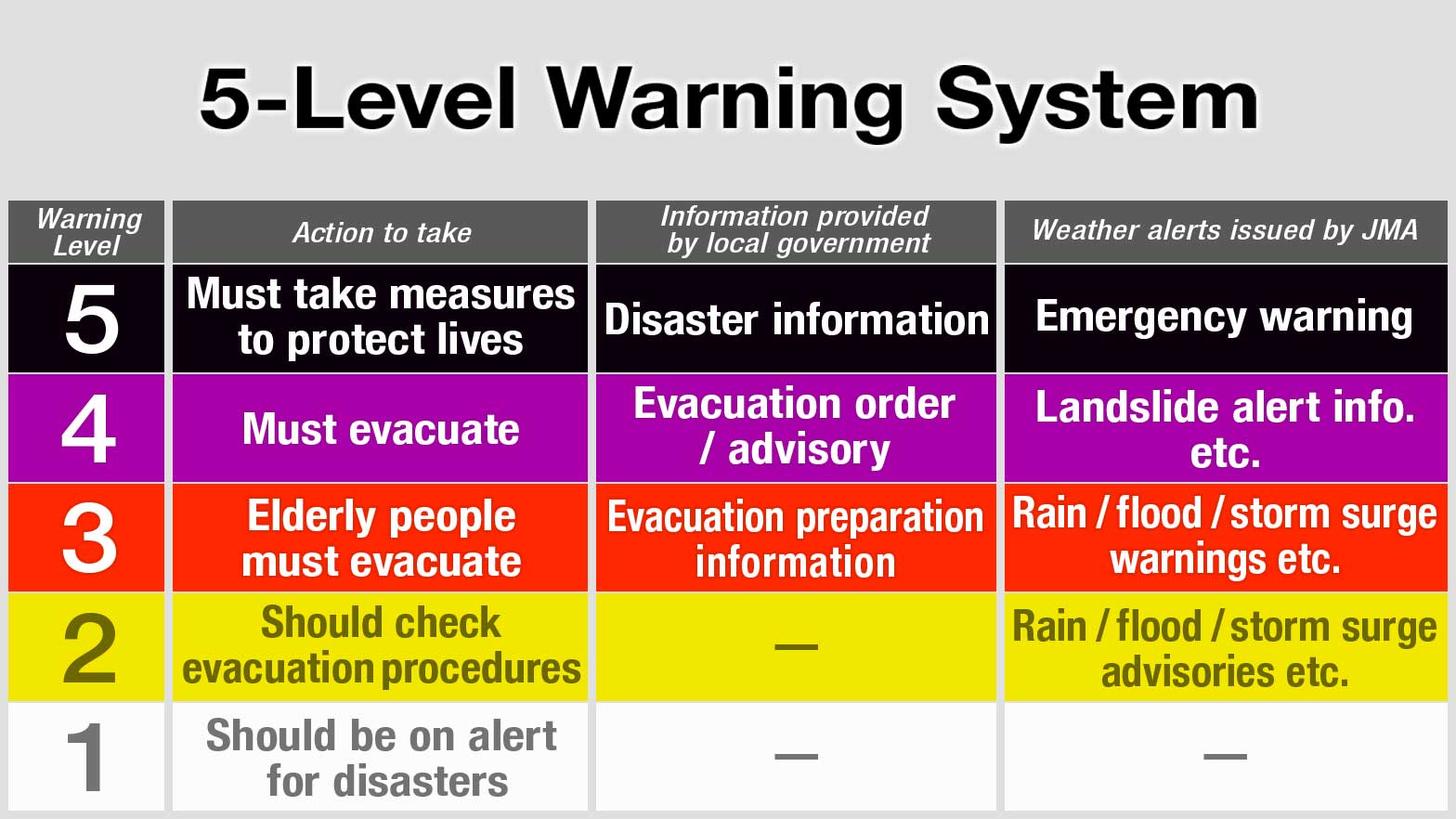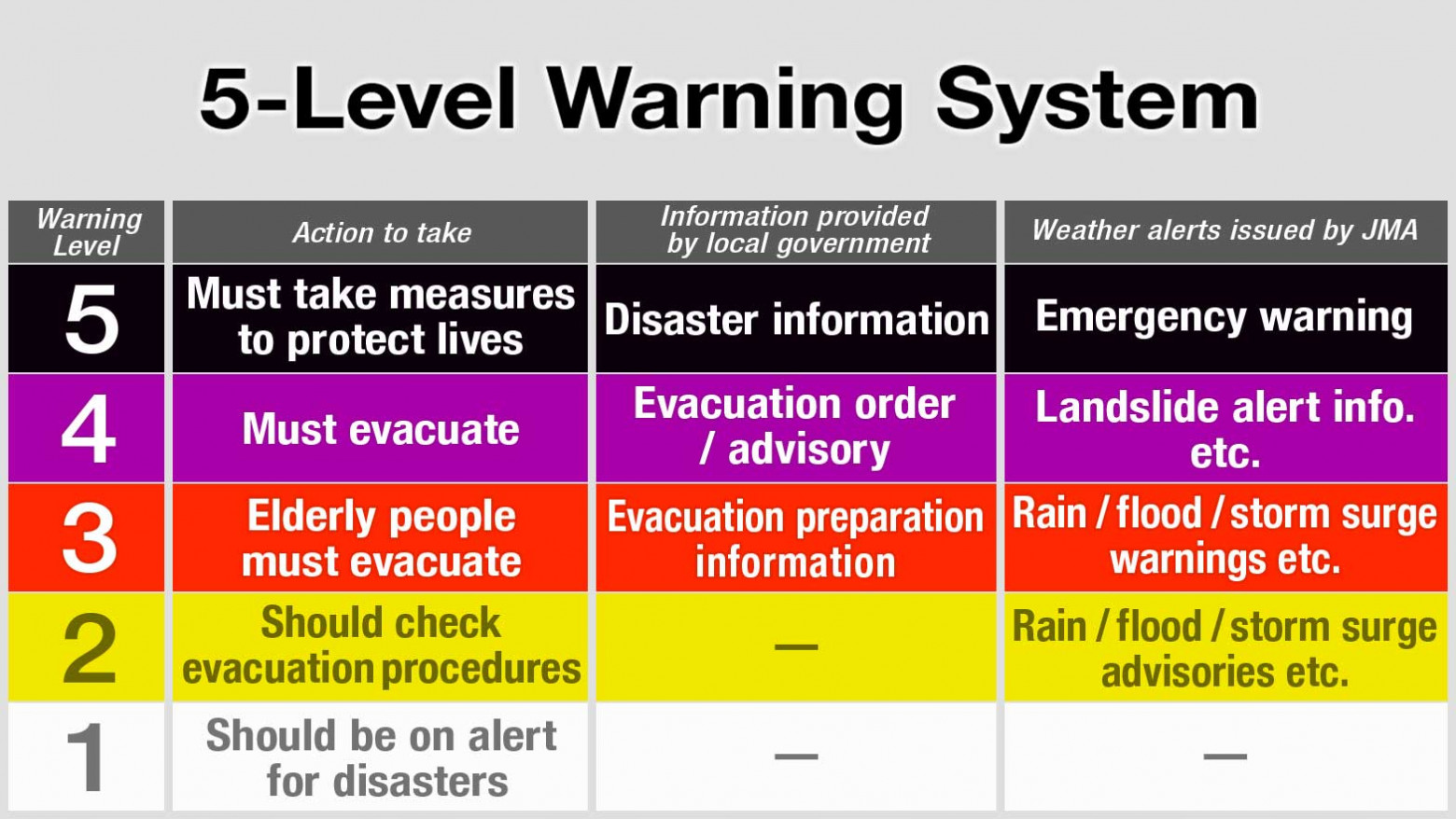What's new?
Under the previous system, the JMA and local governments issued their own evacuation instructions. Now, weather alerts from different organizations have been combined to give people a clearer understanding of the situation.
Level 1 corresponds to “early warning information” issued by the JMA. It indicates that people should be alert for weather updates.
Level 2 means “heavy rain/flood/storm surge advisories” have been issued by the JMA. People are required to take concrete action, such as avoiding areas where a disaster is likely to occur or reviewing the evacuation routes and meeting points on disaster hazard maps.
Level 3 indicates “heavy rain/flood warnings” from the JMA or “evacuation preparation information” issued by local governments. The elderly and people who need assistance must start evacuating at this stage.
Level 4 corresponds to “landslide alert information” issued by the JMA or an “evacuation order” issued by local governments. All residents are required to evacuate to safe places immediately.
Level 5 is the most severe warning. It corresponds to the JMA’s “heavy rain emergency warning.” At this stage, it is likely that severe disasters have already occurred. People should make every effort to save themselves.

Background to the new system
The most significant factor behind the new system was catastrophic flooding that devastated parts of western Japan during the 2018 rainy season. A seasonal rain front stalled for a couple of weeks, dumping a record-breaking 1,000 mm of rain on some areas.
Although weather agencies had warned of the possibility of a disaster several days in advance, over 200 people lost their lives in landslides and floods.
Why didn’t everyone evacuate?
Analysis suggests many people did not follow evacuation instructions, although warnings had been issued in plenty of time.
In Hiroshima Prefecture, which saw the worst of the flooding, over 2 million people were advised or forced to evacuate but only 17 thousand did so. That accounted for only 0.8 percent of the area's population.
Psychologists say people tend to underestimate the likelihood of a disaster and its possible impact. They cite the common human tendency to believe things will be fine under any circumstances -- a psychological state known as the “normalcy bias.”
Another possible reason studied was the complicated warning system. The JMA issued weather warnings, while local governments issued evacuation orders or instructions. The existence of multiple information sources might have confused people and have prevented them taking the appropriate action. That led to the creation of the new system.
Crying wolf
Although the new system is easier to understand, there are concerns it could lead to a different problem. During the rainy or typhoon seasons, relatively high warnings at levels 3 or 4 might be issued quite frequently. There is a risk that if disasters usually do not occur in those cases, people could end up ignoring the warnings in future.
Saving your life
The first level 4 warning under the new system was issued in western Japan, including Hiroshima, on June 7. Luckily, the actual damage was not as forecast and there were no major casualties.
Only 0.1 percent of residents evacuated, despite receiving the level 4 warning, which calls for a full evacuation. Some residents said the actual weather conditions they saw meant they did not feel pressed to evacuate.
However, one group did respond effectively. Some elderly people said the new warning system was easy to understand and they felt confident following the evacuation instructions.
No matter how many warnings the weather agencies issue, actually evacuating is up to the individual. The benefit of this new warning system is that it gives opportunities for people to take action to save themselves as early as possible, before disaster strikes.

